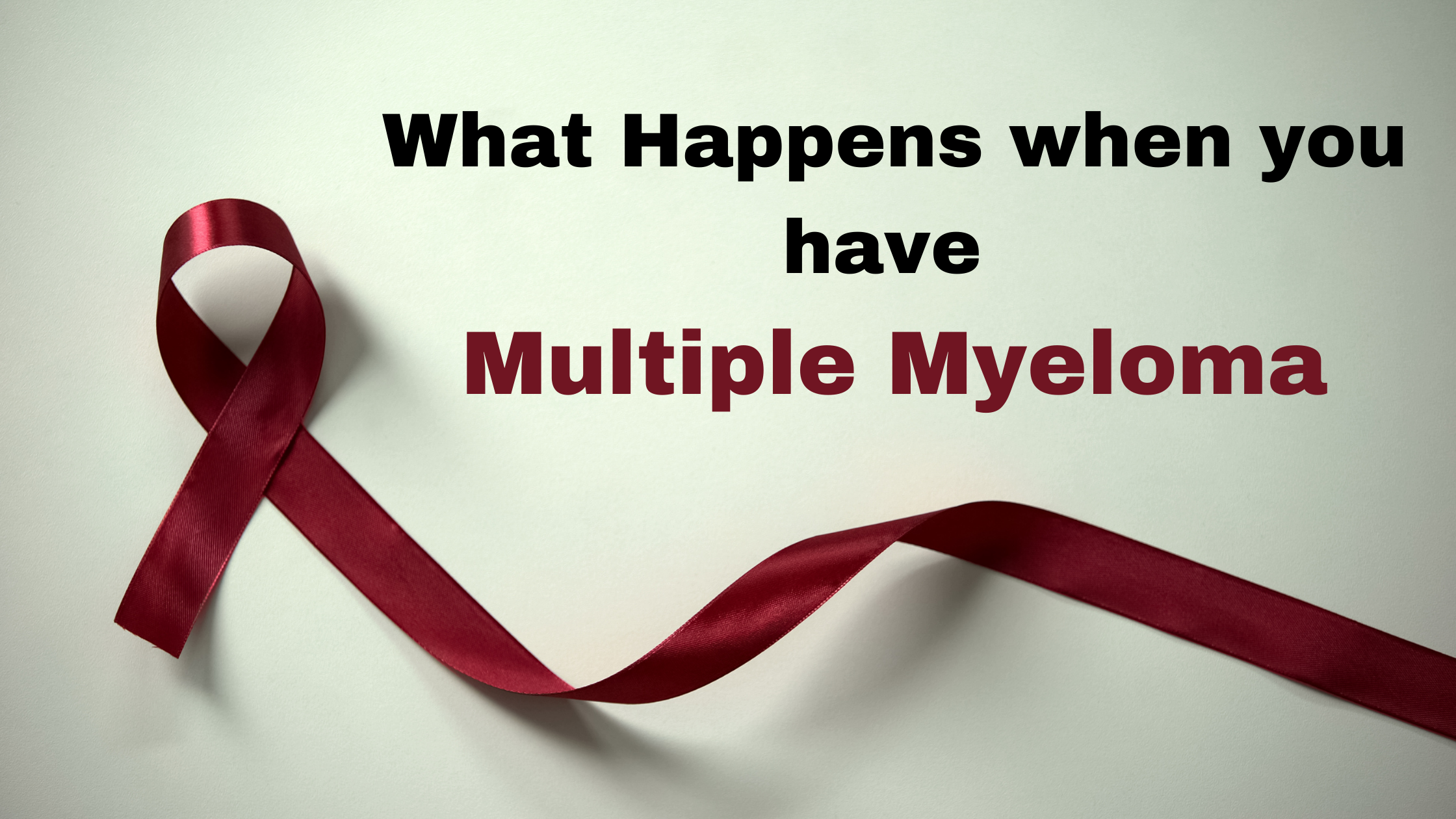
Posted in: Multiple Myeloma Treatment by Dr. Tarang Krishna Posted Date: 16 Oct, 2020
What Happens When You Have Multiple Myeloma?
Multiple Myeloma is one of the most dreaded malignancies known worldwide. The incidence of Multiple Myeloma has been increasing across the world especially in the Indian subcontinent. Being considered as a rare form of cancer until the last decade, Multiple Myeloma has always eluded the medical fraternity due to limited treatment options that were often rendered ineffective. But the scenario has changed over time. Rigorous researches both in modern medicine and alternative therapies have lead to a much stronger and consolidated approach that can combat Multiple Myeloma.
Before understanding the treatment options available for cancer, let us understand the basics about multiple myeloma and what are the risk factors, causes, and features associated with it.
What is Multiple Myeloma?
Our blood is composed of certain specialized cells with designated functions. These include lymphocytes that protect from harmful influences, red blood cells that carry oxygen to the tissues, and platelets that help in clotting. Plasma cells are a type of lymphocytes or white blood cells that are found in the bone marrow and are mainly responsible for making antibodies required for fighting off germs and bacteria.
An uncontrolled multiplication of these plasma cells is known as Multiple Myeloma.
What can cause multiple myeloma?
The exact cause of multiple myeloma is unknown though some hypothesis has been suggested.
The multiplication and growth of the cells are regulated by certain genes known as oncogenes that promote cell growth and tumor suppressor gene that stop cell growth. In multiple myeloma, the action of tumor suppression genes is compromised leading to an unrestricted multiplication of plasma cells.
Risk Factors
Some of the factors that can increase the risk of multiple myeloma include:
- Family History: A genetic history of Myeloma in the family is a prominent risk factor although there are many patients who contract the disease despite not having any family history.
- Age: The risk of developing multiple myeloma increase with age. It affects youngsters very rarely.
- Gender: Males have been found to suffer from Multiple Myeloma more in comparison with the females.
- Body Mass Index: Being overweight or obese increases your chances of getting affected with Multiple Myeloma.
- Plasma disorders: Certain plasma disorders like monoclonal gammopathy of uncertain significance and smoldering multiple myeloma may increase your risk towards Multiple Myeloma.
What happens when the plasma cells multiply in an uncontrolled manner?
Any abnormality concerning the plasma cells may not be evident in the initial stages. However, as the number of immature plasma cells grows invariably, some of the following symptoms may start to appear:
Decreased Blood count
The blood cells are formed in the bone marrow, which is the soft part of the bones. With the increase in the number of plasma cells in the bone marrow, the plasma cells outgrow all the other blood cells such as red blood cells and platelets. The following changes might occur in a multiple myeloma patient.
- A decrease in the red blood cells leads to anemia leading to weakness and lethargy.
- Platelet count is also compromised leading to a condition known as thrombocytopenia that means a decrease in the platelet count. This is evident by increased bleeding and bruising.
- While the plasma cells increase in number, the other types of lymphocytes also suffer leading to their scarcity in the bone marrow. This condition is called leucopenia that results in weak immunity to various infections.
Bone Disorders
The bone cells are replaced regularly wherein the old ones are broken down and the new ones are formed in their place. This continuous process helps in the maintenance of healthy bone and optimized calcium levels. Multiple Myeloma is known to interfere with this process leading to the weakening of bones. Furthermore, the rapid dissolution of bone cells releases calcium in the blood raising the calcium levels.
Such patients might exhibit symptoms like constipation, dehydration, increased thirst and urination, loss of appetite, and weakness.
Spinal Affections
Due to the weakening of the bones, if the spine is affected, the following symptoms might appear
- Backache,
- Numbness in the legs
- Muscle Weakness
Impaired Kidney Function
The overproduction of the antibodies by the excess plasma cells leads to the accumulation of the myeloma protein that may impair kidney function. The excess calcium in the blood may also damage the kidneys to a certain extent.
In some cases, this may not reflect in the form of symptoms for which a confirmatory blood test or a urine test is performed. The symptoms, if present can be:
- Breathlessness
- Itching on skin
- Swelling in lower extremities
Weakened Immunity
The crowding of the ineffective antibodies does not leave space for the remaining immune cells to function. The result is a diminished immune function. This means that a multiple myeloma patient is highly susceptible to various infections that may involve his lungs or kidneys.
Let us explore the treatment options available for Multiple Myeloma:
Treatment approaches
In addition to the chemotherapy and radiotherapy treatments available for all types of cancers, the following treatment options are also recommended to a Multiple Myeloma patient:
- Proteasome Inhibitors: Proteasome protein complexes help the cancer cells replace the older proteins with new ones. These are inhibitors that inhibit the action of the complexes, thereby killing the cancer cells.
- Immunomodulatory drugs: As we had understood, the myeloma protein, also known as the M-protein has a deleterious effect on the immune function leading to a paucity of white blood cells and a compromised immune function. These drugs aim to activate certain immune cells that would impede the growth of cancerous cells.
- Steroids: These may be recommended in patients due to their anti-inflammatory action and a probability to kill cancerous cells.
- Antibodies: Due to the unavailability of natural antibodies in the blood, certain monoclonal antibodies may be introduced into the blood of the patient against the cancer cells.
While these treatments may be able to provide some relief but that is at the cost of various side effects that hamper the quality of life of the patients.
Stem Cell Transplant
The modern system of medicine also offers stem cell transplant as a treatment measure which is preceded with chemotherapy or radiotherapy or both. The aim is to kill the cancer cells before administration of the stem cells that are derived from the patient’s bone marrow itself. This procedure might defer the disease for some time but recurrence is quite common.
You must be wondering that in absence of any modern treatment options, what is the most effective treatment for Multiple Myeloma is. Read on to know the answer.
Immunotherapy
Immunotherapy is an advanced and alternative treatment for cancer that has been formulated after extensive research. Cancer Healer Immunotherapy aims to marshal the specificity and the long term memory of the adaptive immune response to achieve durable tumor regression and possible cure. The ultimate goal of immunotherapy is to restore the ability of the immune system to detect and destroy cancer cells by overcoming the mechanisms by which tumors evade and suppress the immune response, in essence, to shift the equilibrium back in favor of immune protection. The potential of Cancer Healer Immunotherapy to alleviate the suffering of patients has certainly gained it an edge over the other conventional treatments. The fact that the absolute resolution of malignancies is possible without any prospects of relapse is another major factor.
You would agree with us that there is a wide range of options including traditional as well as alternative treatments for Multiple Myeloma. But what do you think can lead to a disorder like this. Further, we will try to explain the causes and risk factors associated with Multiple Myeloma.
You can read more about Multiple Myeloma treatment here
If you wish to see the successfully treated cases of Multiple Myeloma, watch this video:
We hope that we were able to enlighten you with various facts associated with Multiple Myeloma. No disease cannot be conquered but it requires motivation, correct guidance, and the right treatment!




